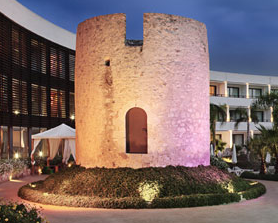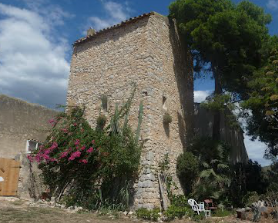Answering “what does Sitges have for Me“
For locals, businesses and tourists
Sitges, set in a micro climate of 300 sunny days a year, is the jewel of Spain and Catalunya. With wonderful, varied, beaches and a relaxed but energetic atmosphere, it is the place to visit or live
About Us
A network of Sitges Websites for locals, businesses and tourists
sitges @ outlook.com
Sitges History
10th Century
Parchments mention Sitges in 10th century (990) as silos
Refering to holes excavated in the ground, to conserve agricultural products
(common in the historic Iberian and Roman towns, at that time)
11th Century
The current town originally grew around a castle in first half of the eleventh century were the current ‘Sitges Town Hall is (in the gothic/old town/area).
Other landmarks mentioned in documents
Miralpeix 41.230508,1.773598
(Directions : Avinguda del Camí de Miralpeix at Dolce Hotel : but we could be wrong)
&
Campdàsens 41.260626,1.878941
(Directions : Carretera de Barcelona a Valls/C-31 11.5 km, 25 mins)
Note: Not the current church/battlements


Dolce Sitges on Cami De Miralpeix Campdàsens
12th Century
Twelfth century the Monastery of Garraf was established.
14th – 15th Century
Castle typically had a feudal lord, but during the fourteenth and fifteenth centuries it went to the “Pia Almoina”, a charitable institution (the Seat of Barcelona).
Dominion of these castles made up the municipal area of present-day Sitges.
Early viniculture (grape variety called “malvasía” from Greek island of Monembasia) & fishing (50% of poulation)
16th Century
Despite Wars & plagues, population & trade grew in sixteenth century, with Spain’s first agricultural market
early 19th Century
With widespread peace in first half of nineteenth century
More
Sitges is a town and a municipality Spanish of Barcelona province in the autonomous community of Catalonia , belonging to the region of Garraf . The town is located on the Mediterranean coast 36 km south of the provincial capital, Barcelona . Its population in 2011 was 28,617 inhabitants
References to the first inhabitants of Sitges (literally ” Silos “in Castilian) dates from before the Neolithic and in more modern times is documented settlement Iberico on the fourth century. C. . In addition, studies find that in the first century Sitges had two small towns, one near the tip of the hill and another at the shrine of Vinyet. Attached to the Olérdola Roman port served the White Subur exchange between the products of Penedes and elsewhere in the Mediterranean Roman .
In the Middle Ages the castle stood, above the ridge of Punta, where today is the town hall (built in 1889 ) and was first owned by the Cathedral of Barcelona later ceded it to count Mir Geribert ( 1041 ). In the twelfth century , Sitges was under the control of the family Sitges (adopted the place name of the town as a surname), this family is documented the year 1116 until 1308 when Agnes of Sitges sold his rights to castellanía Fonollar Bernat of which was Lord from 1306 to 1326 . After the death of his second wife, Blanche of Abella , Sitges succession decision happened to Pia Almoina of Barcelona , ecclesiastical institution attending to the poor, in whose hands it remained until 1814 . Bernardo was a gentleman of Fonollar directly related to the court of King James II and his tomb and his wife are the church of San Bartolome and Santa Tecla. The life of the inhabitants of these centuries was organized around the hill that was walled Baluard and connected to the rest of the village with a bridge over the current High Street. Other names of three towers located at different parts of the town, were raised the year 1303 . Also noteworthy was the palace of the Moorish King of the fourteenth century .
In the eighteenth century, many Sitgetans established colonies on the west coast of the Gulf of Cadiz on the occasion of the best fishing conditions in the area and as a solution closer to American trade. Eventually Sitges fishermen contributed, along with other (mainly Mataró and Canet de Mar), the foundation of the present Isla Cristina , as even today attest Catalan words from your vocabulary and Catalan surnames of their descendants (Miravent, Giralt, Cabot, etc.).
The main economic activity of the town was growing and vineyard , especially of Malvasia . Also cultivated wheat , orchard , carob and palm symbol of Garraf . Since 1345 when Villafranca del Penedes asked permission to have a port in Sitges villa became the outlet for products outside of Penedes.
During the Early Modern University Sitges (Ayuntamiento) strove to escape from feudal control of Pia Almoina. The year 1814 definitely Sitges was released and joined the crown despite suffering in the various wars that happened. Economic activity remained the peasantry, fishing and port activities that grew out of the eighteenth century when Catalonia was granted permission to trade directly with America . Since the late eighteenth century ( 1779 ) until the early nineteenth century established a steady trade with the American colonies.















